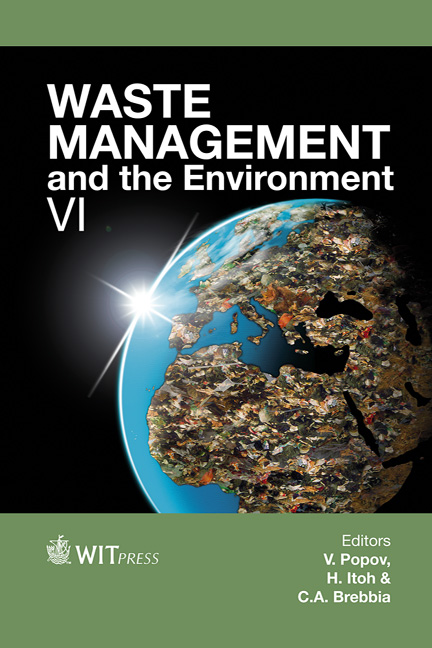Isolation Of Hazardous Soil Contaminated By DU (depleted Uranium) From Groundwater
Price
Free (open access)
Transaction
Volume
163
Pages
12
Page Range
297 - 308
Published
2012
Size
1,058 kb
Paper DOI
10.2495/WM120271
Copyright
WIT Press
Author(s)
R. Pusch, S. Knutsson, L. Al-Taie & M. Shahrestanakizadeh
Abstract
Cappings of waste piles conventionally contain a drain layer over a lowpermeable clay liner composed of smectite minerals. The rate of percolation of the clay liner, once it has been largely water saturated, determines the downward migration of water into and through the underlying waste. In a desert climate, cyclic variation in the degree of hydration of the clay takes place, from desiccated to largely water saturated conditions. Clays of smectite type effectively seal off the underlying waste but the content must be low for preventing contraction and expansion causing a reduced isolation potential of the liner. Penetration of the liner, implying wetting of the waste, starts when the top liner is largely water saturated but the hydration followed by dehydration is confined to take place only to a limited depth according to the assumed wetting mechanism. The rate of wetting usually follows a log time law. For an ideal composition and density of the upper clay liner there will be no percolation and wetting of the underlying waste. This paper is focused on the mechanisms involved in hydration/dehydration of a top clay liner prepared by mixing clay and ballast material for providing a basis for design, construction and maintenance of well performing cappings. Keywords: hazardous waste, depleted uranium, landfill, groundwater, contamination, microstructural modelling. 1 Scope The present paper deals with shallow disposal of hazardous waste for which many designs have been proposed, like the one in fig. 1. The major drawback of this solution is that water can enter and flow laterally through the waste mass causing contamination of soil and groundwater on the lee-side. A superior
Keywords
hazardous waste, depleted uranium, landfill, groundwater, contamination, microstructural modelling.





